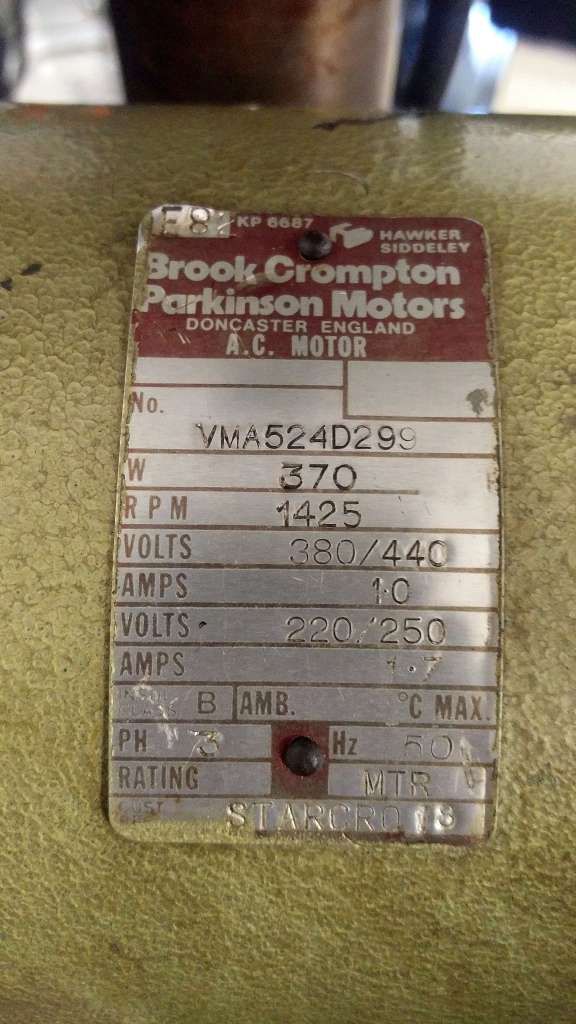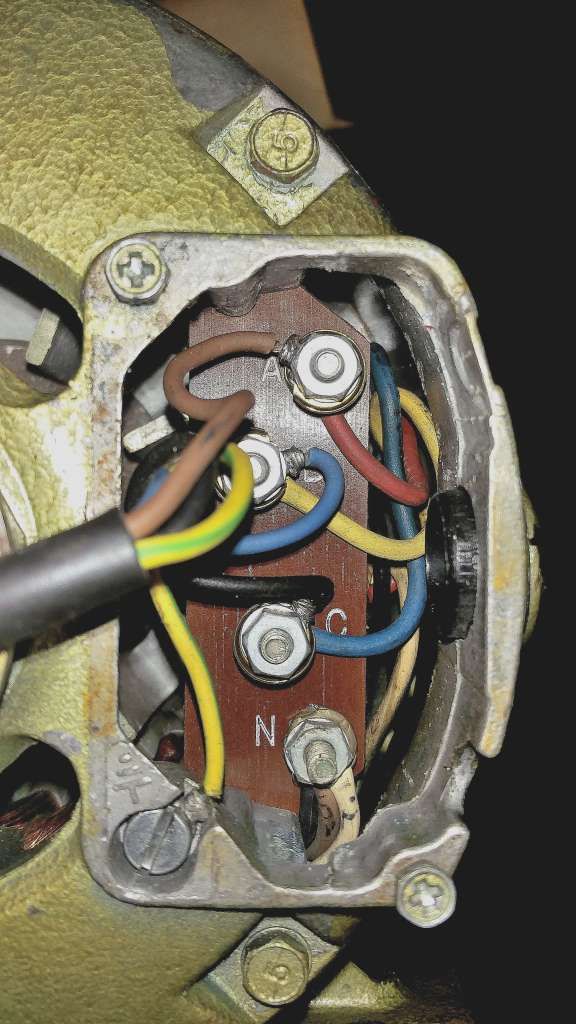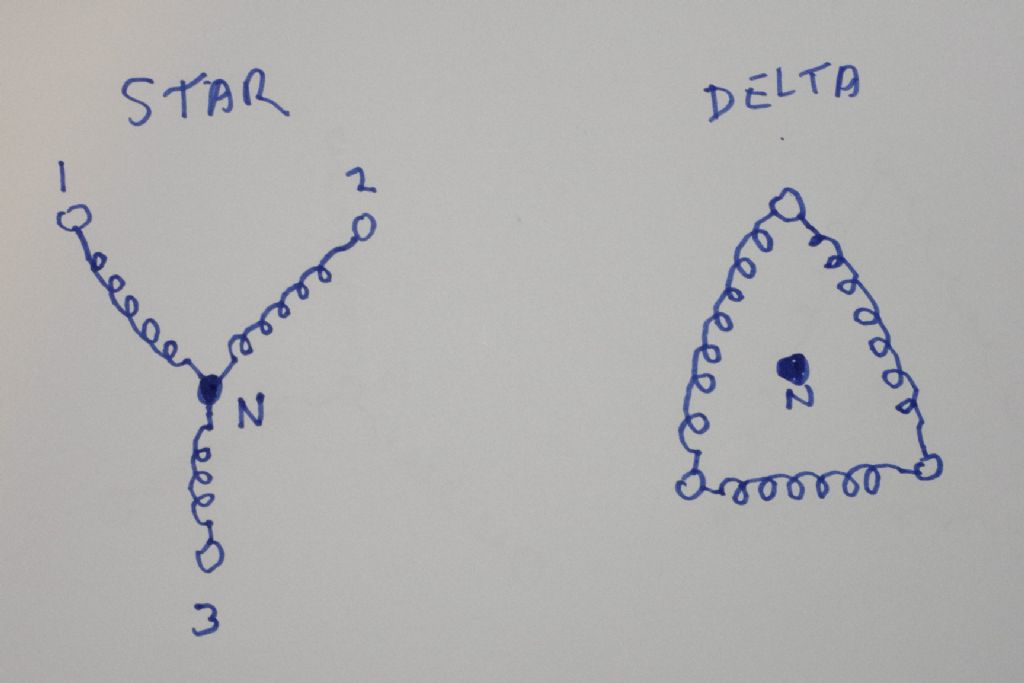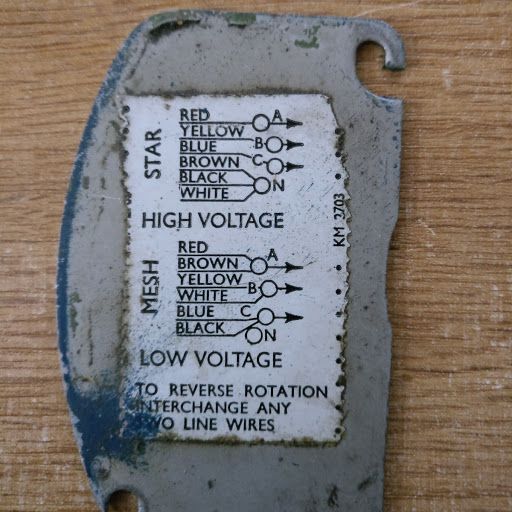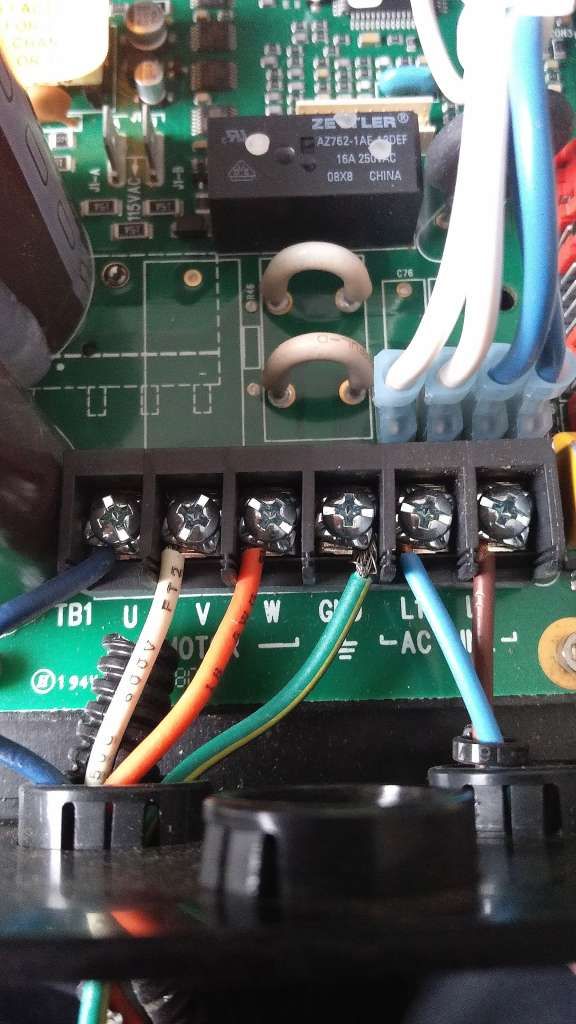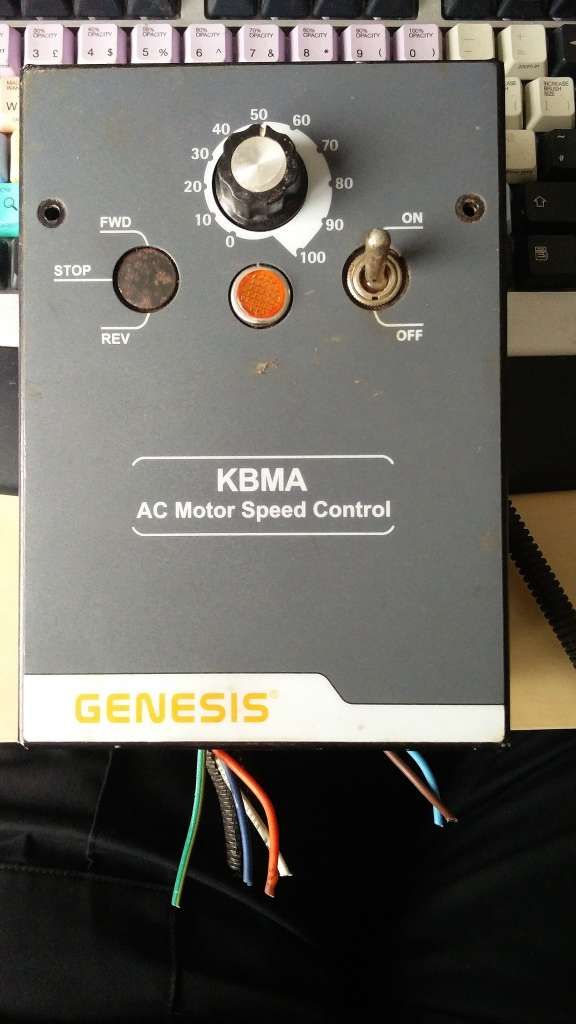When I wired my mill up to 220v delta I used the following procedure to ensure correct polarity of the windings. I noted the colours/terminal designations which related to each winding on a post it note. I just used a multimeter rather than a zero centre one and watched which way the needle tried to kick.
i) With a multimeter or continuity tester, you can segregate three sets of windings.
ii) Now, assume one set of windings to be, say, winding "U" and also, designate its terminals as assumed "U1 & U2".
iii) Take a 9V Cell; Connect + ve of Battery to the assumed "U1" preferably thro a push-switch and – ve to the assumed "U2".
iv) Connect a zero centred galvanometer, to another set of winding, say winding "V" such that the assumed "V1" is connected to the + ve terminal of the galvanometer and the assumed "V2" to the – ve terminal of the meter.
v) Now, when the switch is pressed, the zero centred galvanometer would deflect in the positive direction, if the assumed "U1, U2, V1 & V2" are correct.
vi) Else, if the deflection is on the negative side in the galvanometer, change your assumptions for either one of the winding (That is may be the assumed U1 can be U2 and the assumed U2 is U1 . Or keep the assumptions for U winding as it is and reverse it for the V winding (that is assumed V1 is V2 and assumed V2 is V1).
vii) Repeat this test for applying voltage to other windings and confirm your terminal assumptions.
The reason the winding polarity is critical is that the windings must have the proper phase to generate a rotating magnetic field to drive the rotor in a given direction. If one of the windings has the wrong polarity then that winding will be trying to rotate the field in the wrong direction. This causes poor motor torque and generates high winding currents.
HTH
Edited By bill ellis on 29/09/2019 10:17:51
 Gary Wooding.
Gary Wooding.

